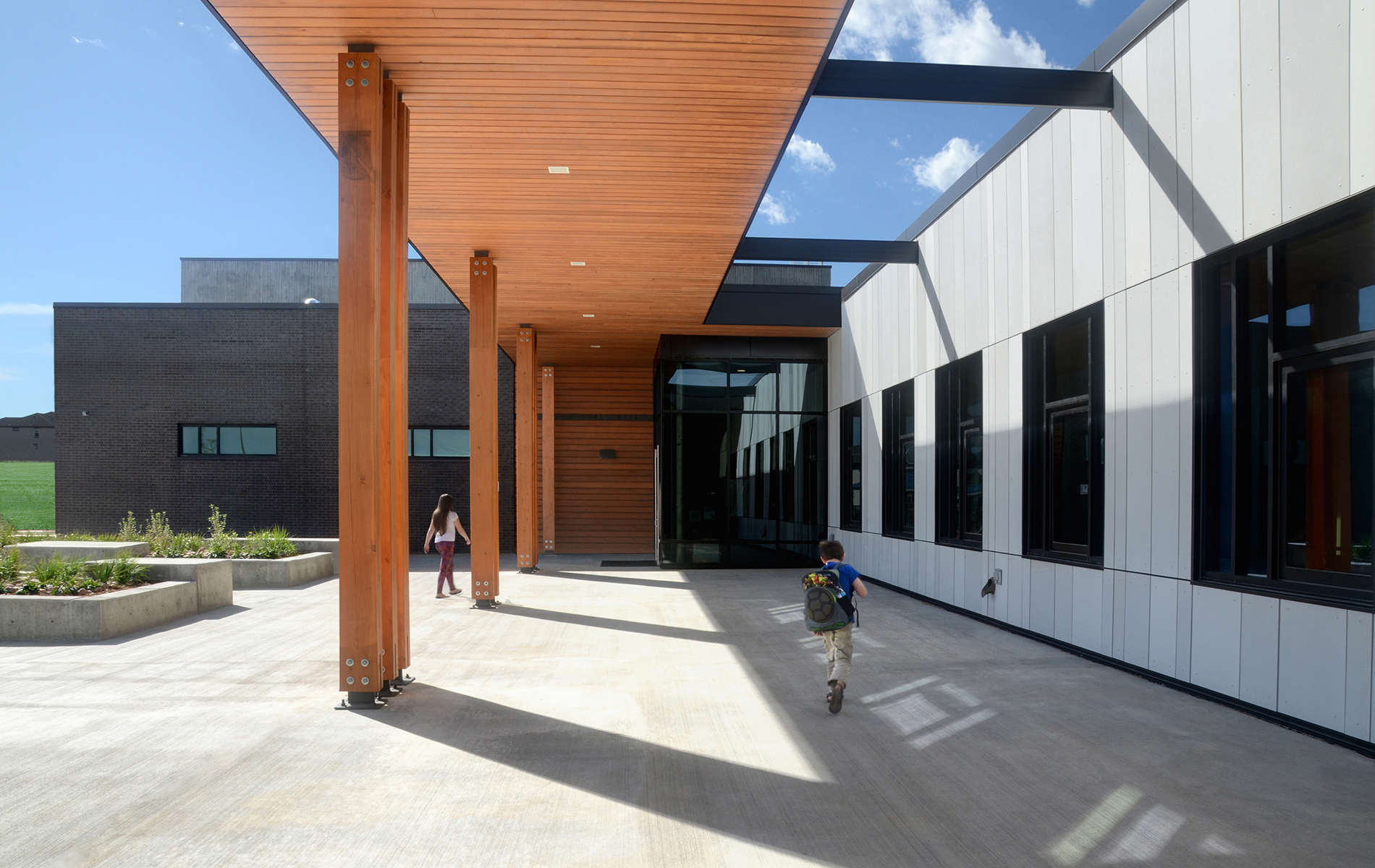The Emerging Link Between Ventilation Strategies And Academic Achievement
The Emerging Link Between Ventilation Strategies And Academic Achievement

A version of this piece was originally published in the Fall 2018 edition of Learning By Design Magazine
While there has been plenty of speculation and some evidence over the years about the impact of Indoor Air Quality (IAQ) on learning, the recent Harvard School of Public Health’s “CogFx” study1 has provided overwhelming evidence connecting indoor air quality to human cognitive function. A key finding of the study, published in 2015, is that cognitive function as measured by nine different variables drops dramatically as the concentration of Carbon Dioxide (CO2) increases. Importantly, CO2 levels typically allowed by building code and found in most schools routinely exceed the point at which cognitive impairment begins.
Although the study only examined cognitive function in office environments, it is a simple matter to extrapolate the findings to educational environments. In fact, it is hard to imagine what factors could negate the applicability of the study to school students and teachers. Until recently high indoor CO2 was considered an indicator of other IAQ problems, such as volatile organic compound (voc), dust, and other contaminants. We now know that high CO2 is a threat in itself, with the victim being our ability to think and process at our highest levels.
The VAV Overview
In the last few decades schools have sought ways to balance energy efficiency with adequate ventilation. A preferred Heating Ventilating and Air Conditioning (HVAC) system that has emerged and become dominant is called Variable Air Volume (VAV) It has largely replaced the older Constant Air Volume systems that were less energy efficient. Many schools designed today get by with code minimum ventilation for classrooms using VAV where energy efficiency is achieved by reducing airflows to match heating or cooling loads. Code-allowed CO2 concentration varies slightly, but is approximately 1,000 ppm. The Harvard School of Public Health study indicates measurable cognitive function impairment begins.
Bundling heating, cooling, and ventilation into one system, as VAV systems do, often leads to compromised choices, providing adequate ventilation air for one space but over-ventilating another, or providing cool air to serve a fully occupied space while overcooling another unless reheating is implemented at an energy cost penalty. When VAV systems reduce fresh air supply to one or more spaces, they may increase CO2 concentrations above the already high ASHRAE recommended level.
Benefits of Proper Ventilation
It’s a well-known fact that the costs of construction and annual utilities for most building types are dwarfed by the cost of the employees who occupy them. In a typical office building employee cost may be 90 percent of the total cost averaged over 30 years. Because schools have a lower density of paid employees than office buildings the ratio is lower but still impressive—perhaps 70 percent of 30-year cost is related to employees. Any design strategy that improves the performance of school employees has an obvious economic benefit.
In schools, improving occupant performance has benefits even more profound than economics—better academic achievement, teacher retention, and reduced absentee rates. While these benefits remain conjectural, they are likely given the existing research. The community of architects dedicated to educational facility design fervently hopes for studies similar to Harvard’s CogFx that will demonstrate conclusively the need for better design of school ventilation systems and the link to learning.
HVAC Design in Action
In response to the Harvard study, Cuningham Group Architecture asks mechanical engineers to consider designing systems that reduce CO2 concentrations, while simultaneously retain the energy savings benefits of typical HVAC systems. We have suggested a target of 800 ppm maximum as a design standard.

The Advanced Energy Design Guidelines (AEDG) published by ASHRAE2 offer a few suggestions to achieve such results, but they are not yet well-tested in the field. They are also poorly understood by the design and construction communities, resulting in higher adoption costs. Additionally, our clients are understandably concerned about adopting new systems without the expertise to maintain them. And yet, the incentives to improve learning through better IAQ while advancing energy efficiency are sufficient motivation for us to persevere. We have completed one PreK–8 school in which we tested new HVAC systems and are designing others. Early in 2019, we’ll share results from that first building and our subsequent efforts to improve IAQ in our schools.
1. Associations of Cognitive Function Scores with Carbon Dioxide, ventilation, and Volatile Organic Compound Exposures in Office Workers: A controlled Exposure Study of Green and Conventional Office Environments. Harvard, SUNY and Syracuse University
2. Advanced energy design guide for K-12 school buildings: 50% energy savings, ASHRAE, 2011